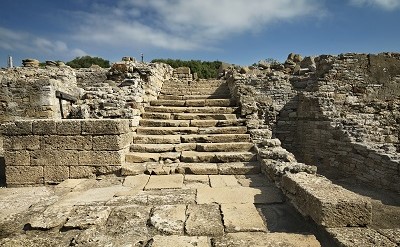- Fundación Cepsa and the Regional Government of Andalusia renew their commitment to enhance the value of the Carteia archaeological site
Specifically this year, thanks to the support of Fundación Cepsa, it will be possible to create a catalog and study of all the hydraulic infrastructure of this Roman city, as the archaeological site of Carteia contains a significant variety of unique elements that form part of its hydraulic infrastructure and which have not been studied to date. The objective of the hydraulic infrastructure catalog is to perform a diagnosis of the elements that are currently known and to gather all the necessary data that will allow for an analysis of each element and to know its characteristics, construction materials, and state of conservation in order to propose, in subsequent phases, the consolidation, conservation, and restoration actions necessary to enhance its value. On the other hand, work will continue in the Roman Forum, where the northeast area of the wall will be defined, consolidated, and restored.
Estrella Blanco, head of Fundación Cepsa in Campo de Gibraltar, said that collaboration with the archaeological site of Carteia is "part of the commitment of Fundación Cepsa with the region of Campo de Gibraltar, its history, and heritage. We will continue in this line, working with the Regional Government of Andalusia to enhance the value of this site and that year after year it becomes an enclave of greater relevance."
Cepsa's collaboration with the archaeological site of Carteia, owned by the government of Andalusia, goes back more than two decades, and is now led by Fundación Cepsa. Over this time, different actions have been carried out such as the conservation and enhancement of the Roman Circus, the visitors’ trail and historiography, historical cartography, paleo-environmental studies and paleo-topography studies, cleaning and preparing the spaces and entrances, among others. Thanks to the constant support and close relationship between both institutions and the involvement of their professionals, it has been possible to carry out not only minimal restoration and maintenance on the ruins and buildings, but also archaeological research and restoration, as well as sharing information with the scientific community and society as a whole.

